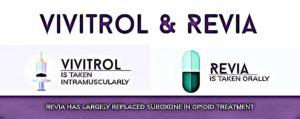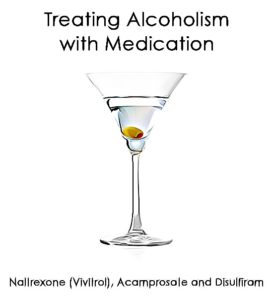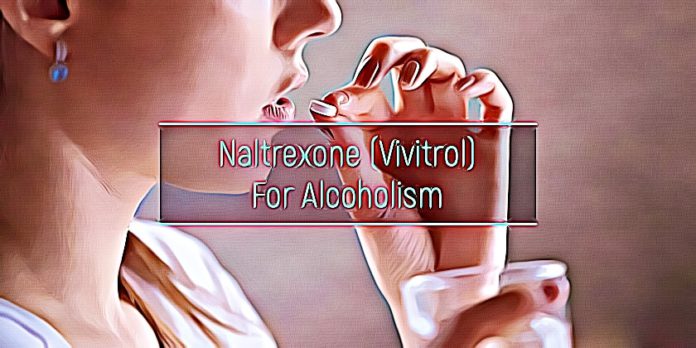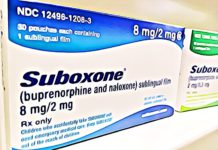Overcoming alcohol addiction is a goal that seems out of reach for many alcoholics. The mere prospect of quitting cold turkey or spending time in a detox facility can be intimidating enough to cause some people to pour a drink to ease their anxious feelings.
Fortunately, the Sinclair Method offers a course of treatment that doesn’t involve abstinence or a lengthy stay in a controlled medical facility. Below is a look at this groundbreaking treatment for alcohol dependence and the reasons why it is steadily gaining traction with the substance abuse community.
What is the Sinclair Method?
The Sinclair Method for Alcohol Disorders (“The Sinclair Method”) is a revolutionary treatment for alcohol use disorders that involves taking a medication called Naltrexone to reduce alcohol cravings. It was developed by John David Sinclair, an American neuroscientist who devoted much of his career to researching the effects of alcohol on the brain. The method is FDA-approved and is well-tolerated by nearly everyone who tries it.
Who is a good candidate?
Virtually anyone 21 or older who is in good health but struggling with alcohol dependence is a good candidate for the treatment. And because Naltrexone is covered by many prescription plans, the Sinclair Method is an affordable option for most people. Before starting treatment, all potential patients will be thoroughly screened to ensure they are appropriate candidates for treatment.

What are the top benefits of the treatment?
The Sinclair Method is an attractive treatment option for alcohol abusers – especially those who have tried traditional treatment methods and been unsuccessful. Here is a look at some of the top benefits of the treatment:
1) Abstinence is not a requirement
Abstinence is the cornerstone of most traditional treatment approaches. Unfortunately, many people with alcohol use disorders fail to make progress with traditional treatment plans because they are unable to abstain from using alcohol.
In contrast to traditional treatments, the Sinclair Method does not require complete abstinence. In fact, the treatment’s success hinges upon participants’ consumption of alcohol in the initial phases of treatment. Participants are instructed to take Naltrexone as directed prior to drinking alcohol to eliminate the endorphins that are typically produced. The end result is a reduction in cravings.
2) A highly confidential approach
Many people battling alcohol addiction are ashamed their substance abuse has spiraled out of control. Some people are so embarrassed that they avoid seeking treatment because they fear someone may see them at a treatment facility or at an AA meeting.
With the Sinclair Method, there are no receptionists, no public meetings, and no crowded waiting rooms. There is no communication with insurance companies or with claims processors. Most importantly, patient privacy and confidentiality are always respected.
3) Minimal disruption to the daily routine
One of the challenges with traditional treatment approaches is the disruption to the patient’s daily routine. Fulfilling everyday duties at work and at home becomes nearly impossible if a lengthy inpatient or outpatient treatment plan is recommended.
The Sinclair Method involves minimal disruption to a participant’s daily routine. Treatment appointments are short and there is no lengthy overnight stays at a medical facility, allowing people to fulfill their responsibilities at home and at work while progressing toward treatment goals.
4) Treatment can occur at any time or place
Treating alcohol use disorders with traditional approaches can be tricky because triggers can arise unexpectedly, leaving the person without a plan or resources to address their cravings. Traveling, dining out, and any departure from everyday life can therefore present major challenges.

Overcoming these obstacles is possible with the Sinclair Method, as long as the participant has their Naltrexone on hand and takes it in advance of their exposure to alcohol. People can even take vacations and business trips as long as they pack their medication and take it as prescribed.
5) Safety is a key consideration
Attempting to quit drinking cold turkey or by using an unproven fly-by-night method can be dangerous and often proves to be ineffective. Medically supervised detox, on the other hand, is typically safe, yet restrictive and often entails a host of unpleasant withdrawal symptoms.
People who use the Sinclair Method to quit drinking are able to rest assured knowing that Naltrexone is approved by the FDA and verified by Psychology Today. Patients are evaluated and monitored for side effects, and they don’t have to endure the physically exhausting effects of withdrawal. Finally, all medication is prescribed by a licensed medical doctor or nurse practitioner who has received in-depth training in treatment methodology.
6) Naltrexone is not habit-forming
Sometimes, the prospect of taking another drug or substance can be frightening to a person who is already dependent on alcohol. Some people worry they may ultimately grow dependent on the very drug that is supposed to be helping them.
The good news is that Naltrexone is not habit-forming. The medication is formulated to make cravings extinct without making users dependent on it. This enables users to take Naltrexone as prescribed without worrying that they may ultimately become addicted to it.
Are there any limitations or risks with the Sinclair Method?
As in the case of nearly every treatment involving medication, it’s important to consider potential limitations and side effects. But these are few and far between with the Sinclair Method. Here is a look at some treatment limitations:
- Age: Individuals must be at least 21 years old to be approved for the treatment.
- Co-morbidity: Many people who abuse alcohol suffer from other medical or mental health issues that receive no focus on the treatment.
- Non-compliance: Failure to follow instructions or take Naltrexone as prescribed may impact results or render the treatment ineffective.
- Allergic reactions: In rare cases, anaphylaxis may occur, causing a rash, swelling, or difficulty breathing. Anaphylaxis can be life-threatening.
- Impatience: People seeking an overnight fix will be disappointed. The treatment may take up to 9 months to produce significant results.
- Overseas use: Some countries prohibit the use of Naltrexone. Users should be sure to explore regulations before traveling overseas.
There is also a small possibility that a patient simply may not respond to the Naltrexone. If this is the case, the provider can reevaluate the prescribed dosage and determine whether an alternative course of treatment might be advised.
What can people expect from the treatment process?
Unlike many traditional treatments for alcohol disorders, the Sinclair Method does not involve abstinence or a lengthy, medically supervised detox process. In a nutshell, treatment involves five simple components:
1) Evaluation
The path to safe treatment begins with a comprehensive evaluation by a trained medical doctor or nurse practitioner. During the initial evaluation, candidates can expect to answer questions regarding their medical history, drinking history, and treatment goals. Candidates also have the opportunity to ask questions about treatment methodology and anticipated results.
2) Education
Education is critical to treatment success. Participants are encouraged to ask questions to ensure they fully understand how the treatment works. More importantly, they receive a thorough introduction to Naltrexone and the role it plays in the success of the Sinclair Method. Finally, treatment benefits and potential risks are clearly outlined to make sure individuals have a strong understanding of every aspect of treatment.
3) Medication
Following the initial evaluation and introduction to treatment, Naltrexone is prescribed. Patients usually receive a 30-day supply, or enough medication to last until their next follow-up appointment. Patients should be aware of the strict refill policy, and understand that refills will not be issued until they attend their appointment. Medication can be picked up at most local pharmacies.
4) Blood Work
As discussed above, one of the risks of using Naltrexone is liver damage. While the risk of liver damage is minimal compared to the risk of liver damage from prolonged alcohol abuse, it is still important to screen for liver trauma. The key to mitigating this risk is to have blood work done in advance of treatment. A trained Sinclair Method doctor or nurse practitioner can provide guidance and suggest a local laboratory.
5) Follow-Up Care
Follow-up appointments play a vital role in the success of the Sinclair Method. In addition to monitoring treatment compliance and progress, the appointments enable the healthcare provider to screen for side effects and respond to any concerns patients may have about their treatment. Follow-up appointments are typically less than 30 minutes, with many lasting approximately 15 minutes. They are typically scheduled to occur every 2-4 weeks.
Does the Sinclair Method actually work?
Possibly. Researchers state that the treatment cures alcohol addiction in 78 percent of cases. This statistic is particularly impressive when compared with traditional treatment methods, which often require extensive intervention and leave patients at risk for relapse. While not all patients are guaranteed to experience a desirable outcome, the treatment is backed by dozens of clinical trials and is widely used with success across America.
How can you learn more about the treatment?
Clearly, the Sinclair Method offers a host of benefits to people struggling with alcohol addiction. To learn more about this cutting-edge treatment, consider booking an appointment or call the treatment specialists with Sinclairmethod.org at 1-877-266-4703. You can find out whether you or a loved one may be eligible for treatment and how to take the first step on the road to recovery from alcohol addiction.
















